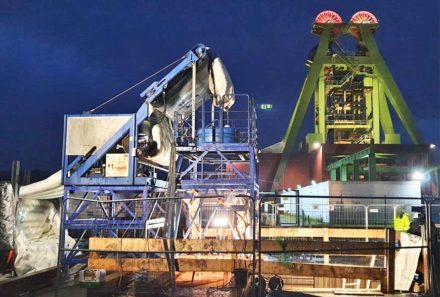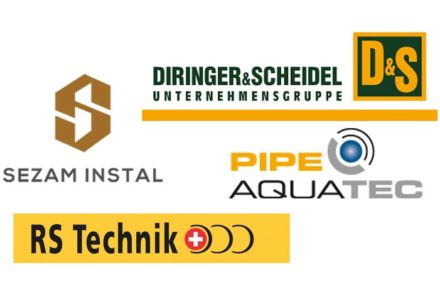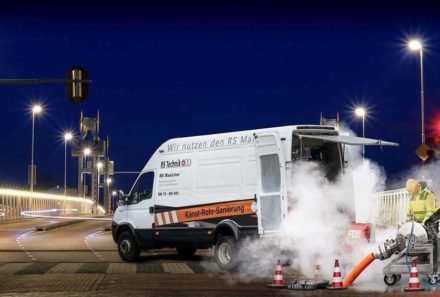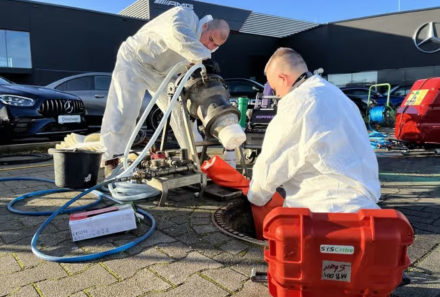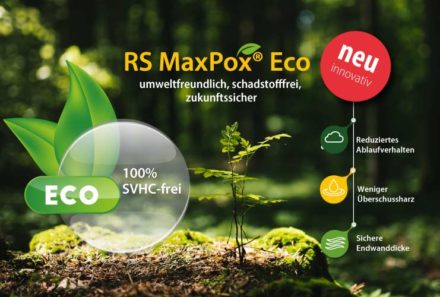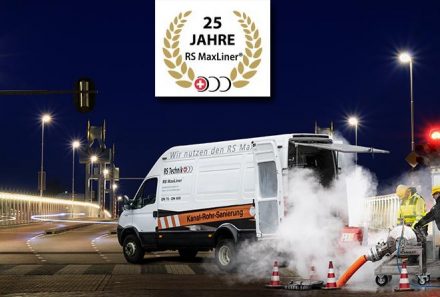News about the sustainability of the RS MaxLiner and its watertight pipe connection to old pipes
News about the sustainability of the RS MaxLiner and its watertight pipe connection to old pipes
In an extensive test setup with various pipe materials, practical verification of the watertight and leakage-free connection of house connection liners based on epoxy resin was provided for the first time in 2019. The concept was developed by IQS Engineering AG together with the accredited test laboratory Siebert + Knipschild GmbH and the testing for the RS MaxLiner now has a life span of more than 4 years.
The rehabilitation of defective pipelines using the lining process is intended to ensure that there can be no waste water leakage into the soil and groundwater. In addition, no ground water and perched water should enter the sewer network. The liner must therefore always be connected to the existing pipeline, the shaft area and all connecting lines in a watertight manner. In pipes of a small dimension this is not always possible with existing connection techniques, such as robot technology and hat profiles.
Amine-curing epoxy resins
In the field of house connections, the use of high-quality epoxy resin systems has been proven for more than 25 years. Real epoxy resins are cross-linked in conjunction with amines in a polyaddition reaction. Resin and hardener combine to form a stable network with extremely low chemical shrinkage. Only in this way can house connection liners be installed without an annular gap and with a bond to the old pipe so that no additional connection technology is required.
The curing of the liner in the existing pipeline takes place under the influence of a defined contact pressure and usually by means of acceleration using hot water or steam. Thus, during its curing process the epoxy resin is actively pressed against the pipe wall, which on the one hand counteracts thermal shrinkage and, also results in a stable chemical bond of the liner to the surface of the old pipe.
UV epoxy acrylates and vinyl esters
It is true that UV-curing epoxy acrylates or epoxy vinyl esters have “epoxy” in their generic name, however, they have a significantly higher reaction shrinkage due to their completely different curing mechanism and are far from being capable of comparable adhesion to the surface of the old pipe. In contrast to the polyaddition mechanism of epoxy resins, the cross-linking of these resins takes place through a so-called radical polymerisation mechanism. The curing is only triggered by radical formation due to the effect of UV light and is associated with a volume contraction of the matrix.
Test concept
Verification of the leakage-free, watertight connection of the RS MaxLiner was carried out on the plastic pipe materials PE, PP (HT, KG2000) and PVC (KG) as well as on cast iron pipes (SML). All pipes were thoroughly coated with deep-frying fat on the inside, joined together to form test sections and cleaned by means of high-pressure water. Then various RS MaxLiner materials were installed and cured in accordance with the specifications of the process manual and the valid National Technical Approval (abZ) / General Construction Technique (aBG) (Approval of the German Institute for Structural Engineering = DIBt-Zulassung). Changes to the installation and curing parameters have not been made in order to ensure transferability to the rehabilitation practice.
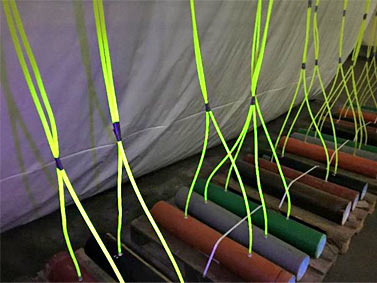
Subsequently, an external water pressure of 0.5 bar (5 m) was applied directly to the boundary layer between the liner and the old pipe by means of boreholes and hoses. A fluorescent test liquid was added to the test water in order to make any backflow between the liner and the old pipe as well as leaks in the liner laminate clearly visible. The exact experimental setup can be found on the website of RS Technik AG (https://rstechnik.com/en/leakage-free-renovation-of-house-connections-with-epoxy-resins/) and in bi_Umweltbau 3/2019.
Long-term verification
The experimental setup has now been in operation at the premises of IQS Engineering AG since 11 April 2019 and is regularly inspected by the engineering office Siebert + Knipschild. Even after more than four years of operation, the installed RS MaxLiners show no leaks and no backflow between the liner and the pipe wall. The RS MaxPox epoxy resin systems that were used sustainably establish the watertight connection of the liner to the various pipe materials and prove its long-term stability at an external water pressure of five metres. The engineering office Siebert und Knipschild was able to present RS Technik AG with a new test certificate (image 3) and confirm the test life of 36,912 hours.
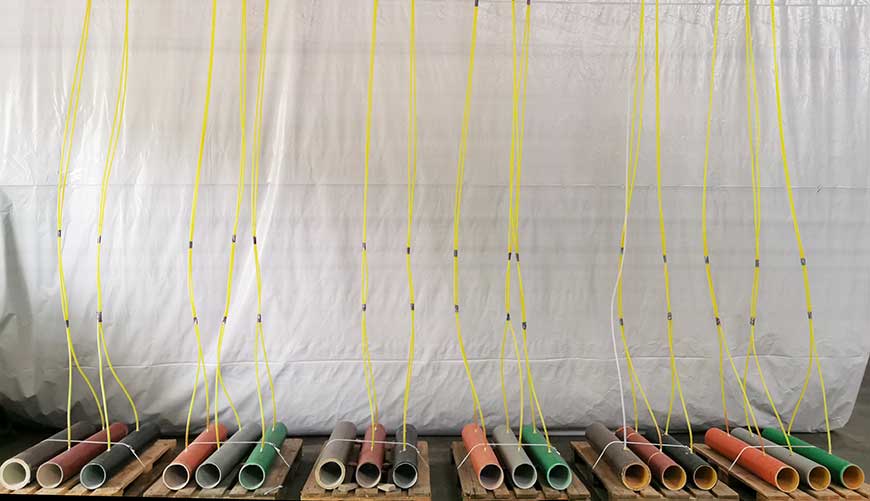
Conclusion
Long-term verification of the watertight and leakage-free connection of the RS MaxLiner on plastic and cast-iron pipes proves that the rehabilitation goal is achieved sustainably via the bond between the liner and the old pipe. The National Technical Approval (abZ) / General Construction Technique (aBG) (Approval of the German Institute for Structural Engineering = DIBt-Zulassung) for the RS MaxLiner Z-42.3-389 contains the information that a watertight connection can be made without additional connection technology. The basic prerequisite for the watertight connection is the possibility of installing the liner without a preliner, which is determined on the basis of an environmental assessment by the German Institute for Structural Engineering. The RS MaxPox ECO is particularly convincing here due to its 100% SVHC-free formulation, and offers long-term sustainability for the watertight connection.


